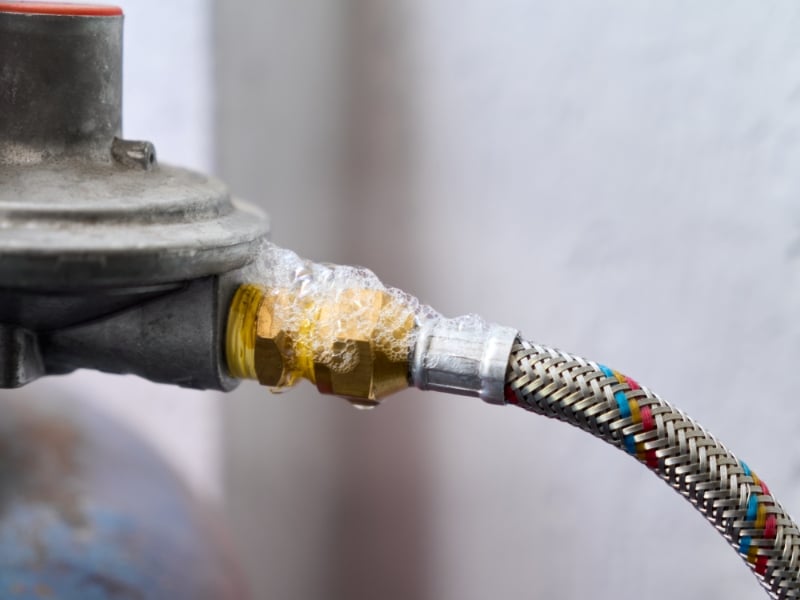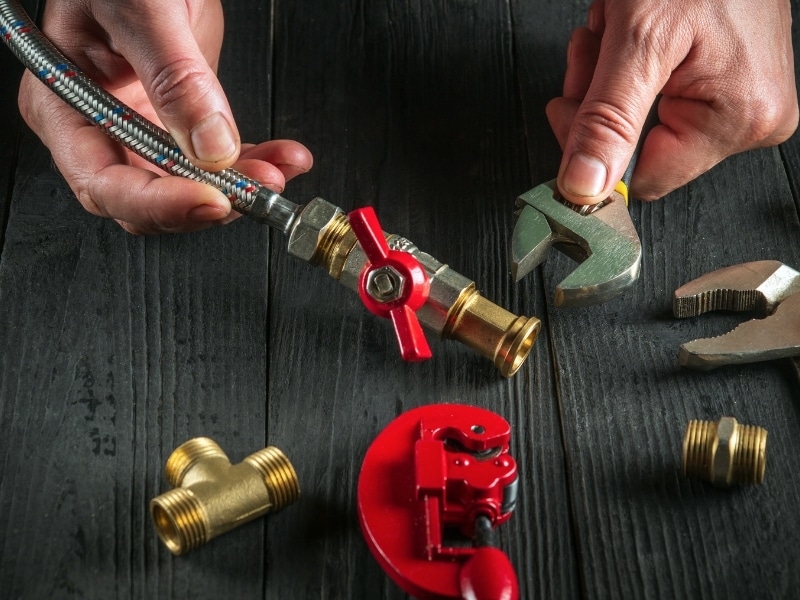When it comes to gas systems in Aussie homes, the condition of your pipe fittings is more than just a minor detail—it’s a major safety concern. Over time, these fittings can wear out, become damaged or loosen; when they do, the results can be downright dangerous. Whether in an older house or a newly built property, paying attention to gas pipe fittings is a crucial part of home maintenance. This article explores why failing gas pipe fittings are hazardous and how to stay safe.
What are the signs of failing gas pipe fittings?
Before things spiral out of control, your gas system usually gives off early warning signs that something isn’t right. Common signs include:
- Hissing sounds near fittings or along the pipe.
- Rotten egg smell is a classic indicator of leaking gas.
- Unusual physical symptoms like dizziness or nausea occur when indoors.
- Discolouration or corrosion on the fittings themselves.
- Higher-than-normal gas bills, even without increased usage.
You might also notice your gas appliances aren’t performing as they should. Weak flame output or appliances frequently switching off can signal a deeper issue in the system. These signs often develop slowly, making them easy to ignore until something drastic occurs.
It’s tempting to ignore these symptoms, especially when life gets busy. But ignoring them means taking a massive gamble with your safety and home.
How do failing gas pipe fittings cause gas leaks?
Leaky gas pipe fittings are a recipe for disaster, especially if you don’t catch them early. Leaks often stem from:
- Cracked or degraded fittings due to age or poor installation.
- Loose connections that let gas escape under pressure.
- Corrosion, particularly in humid or underground environments.
Once a fitting starts to give way, it may continuously release tiny amounts of gas. These small leaks accumulate; without proper ventilation, even a spark from static electricity can ignite the air. The risk is even more concerning in areas like kitchens or basements, where ventilation is limited.
Furthermore, inhaling gas can lead to carbon monoxide poisoning. Symptoms include confusion, chest pain, and even unconsciousness. It’s not just a fire hazard—it’s a health hazard, too. That’s why periodic checks and understanding how fittings degrade are so important.

Why are failing gas pipe fittings dangerous in older homes?
Older homes, especially pre-80s builds, often have dated gas systems that weren’t designed for today’s appliances.Specific risks in older homes include:
- Outdated materials like galvanised steel corrode faster.
- Shifts in foundations that strain or misalign the fittings.
- Old repairs or DIY jobs that don’t meet current safety standards.
Gas regulations have improved greatly over the years. A system that was compliant in the ‘80s may now pose serious hazards. Worn seals, ageing pipes, and hodgepodge retrofits can create a high-risk environment, particularly in poorly ventilated spaces.
The charm of a vintage home often hides decades-old infrastructure. These systems were built to last, but not forever. That’s why it’s critical to understand the risks of using old gas fittings in your home, especially if you haven’t had an inspection in a while.
Don’t assume that because things seem fine, they are. Many issues lurk beneath the surface.
What causes gas pipe fittings to fail over time?
Everything wears out eventually, and gas fittings are no exception. Key causes of deterioration include:
- Age: Time weakens seals and joints.
- Vibration: Appliances can shake fittings loose over the years.
- Poor installation: Jobs done on the cheap can spell trouble later.
- Environmental factors: Moisture, pests, and shifting soil can all wreak havoc.
Rust and corrosion are common in areas with high moisture content or salty air—think coastal regions. These conditions eat away at the integrity of the fitting, weakening it over time. Addressing these problems early is essential to maintaining a safe home.
Failure doesn’t happen overnight. It’s a slow burn—until it isn’t. And when things go south, it can lead to major property damage. Choosing reliable solutions for ageing gas pipe fittings is critical to long-term safety.
| Cause | Description | Potential Outcome |
| Age | Wear and tear from decades of use | Joint leaks and loose seals |
| Vibration | Movement from appliances | Stress fractures |
| Poor Installation | Inadequate tools or shortcuts taken | Immediate or eventual failure |
| Corrosion | Moisture and materials reacting | Gas escapes, health hazards |
Can regular maintenance prevent gas fitting failures?
Too right it can. Maintenance is your best mate when it comes to keeping things in top nick. Routine maintenance involves:
- Annual safety checks by a licensed gas fitter.
- Monitoring gas usage for unexpected spikes.
Inspecting appliance connections for looseness or wear. - Replacing old fittings before they become a problem.
A stitch in time saves nine—and maybe your house. With preventative care, the dangers of letting gas pipe corrosion go unchecked can be avoided altogether. Trust your instincts. If something feels off, get it checked out immediately.
What should you do if you suspect a gas leak?
Smell gas? Time to act fast, mate. Steps to take immediately:
- Turn off the gas at the main valve.
- Open windows and doors to ventilate.
- Evacuate everyone, including pets.
- Avoid using electronics or open flames.
- Call a licensed gas fitter right away.
If you’re not sure where your main valve is located, now’s a good time to find out—before an emergency happens. It’s also worth having your gas fitter show you during the next inspection.
Then, take a breath but not in the house! Your safety comes first. And don’t muck about with delays. Leaks can turn into life-threatening situations quickly.

If you’re unsure about your obligations as a homeowner, it’s worth reading about understanding the legal responsibilities for gas safety in residential homes to ensure compliance.
Are DIY fixes safe for faulty gas pipe fittings?
Short answer: nope. Even if you’re handy, this is not a job for amateurs. DIY dangers include:
- Incorrect sealing might worsen the leak.
- Use of the wrong materials, risking combustion.
- Illegal repairs could void insurance.
It’s not like patching a hose. Gas fitting requires expertise. A bodgy job can cost you more in the long run—not just in dollars. Always call in a pro. Your safety is worth it.
Final thoughts
Failing gas pipe fittings are a serious hazard, but with the right knowledge and proactive effort, you can stay ahead of the risks. Regular checks, professional help, and understanding the signs of trouble are essential to protecting your home and family.
For tailored advice or to schedule an inspection, connect with Eco Plumbers to discuss your options today. Better safe than sorry, right?

